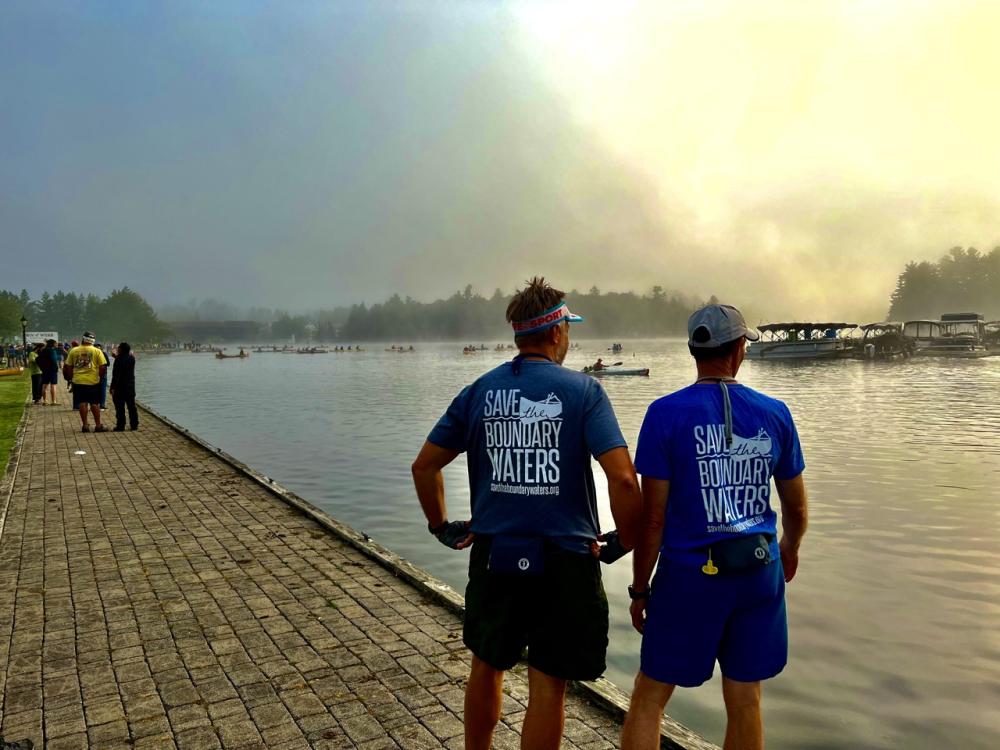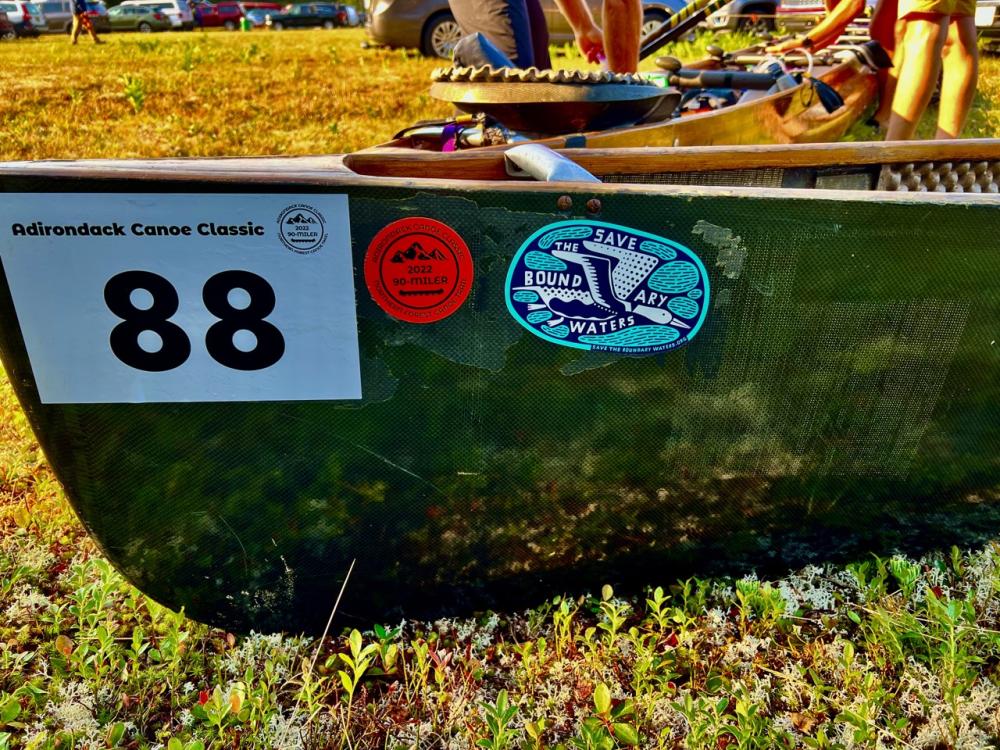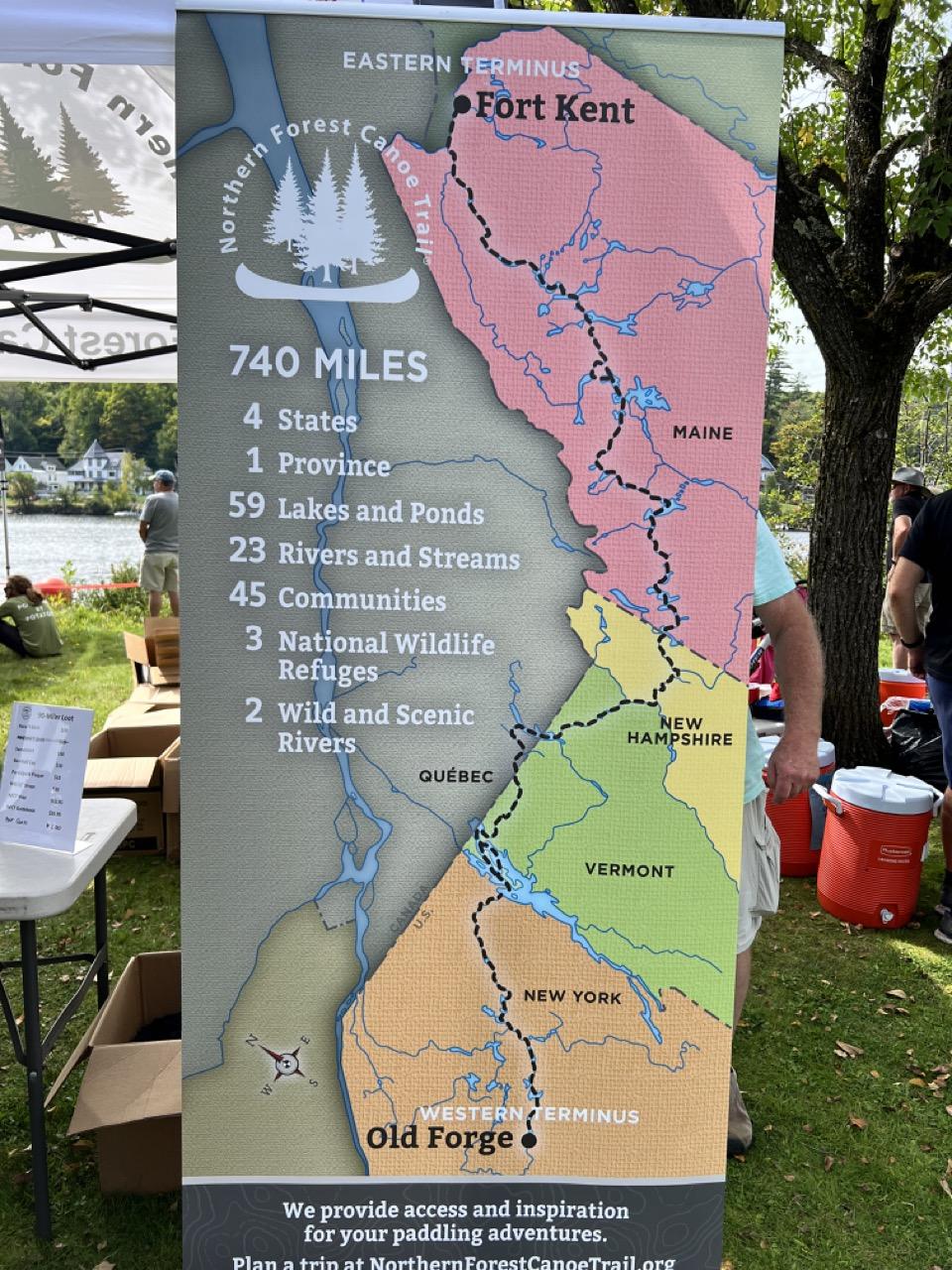When a paddling buddy asked me last summer if I wanted to do the Adirondack 90 Canoe Race with him, my curiosity kicked in, and I agreed to sign on. I was excited to have a new adventure and the Adirondacks in September sounded very enticing. That said, I didn’t know what I was getting into. I’ve done a lot of paddling in the Boundary Waters Canoe Area Wilderness (BWCA), Quetico, and some of our great midwestern rivers, but I’ve never raced before. The experience turned out to be even more incredible than I anticipated.
If like me, you were not familiar with the Adirondack 90, it’s a 3-day canoe race that follows the first 90 miles of the 740-mile historic waterway known as the Northern Forest Canoe Trail. The Trail begins in Old Forge, NY, and flows through Vermont, Quebec, New Hampshire, and Maine. A non-profit bearing the name of the Trail acts as a steward and coordinates the race. Their mission: We protect and steward our water trail and foster community vitality to promote inspiring outdoor experiences in the Northern Forest Region. I encourage you to check out NorthernForestCanoeTrail.org to learn more.
Participating in the race provided an opportunity to spread the word about the Campaign to Save the Boundary Waters to the paddling crowd in the Adirondacks. We were team Save the Boundary Waters, and we were coincidentally assigned team #88. It was a good sign to have the accidental reference to the Echo Trail with us.
We made shirts to represent the BWCA and brought a passel of campaign stickers. Wearing those shirts was like a conversation magnet. So many people stopped us to share their Boundary Waters experience or to tell us it was high on their bucket-list. These interactions are a fresh reminder that the BWCA has a reach far beyond the Midwest. Many of the canoe enthusiasts out there were aware of the copper mining threat, but for those who weren’t, we shared an update. We are confident we gained a bunch of new and re-engaged supporters to our efforts.

As for race prep, our time was limited. We were able to get out in my Wenonah Adirondack for a few training paddles near Ely on Eagle’s Nest 3 and once in Mud Creek to practice tight turns at speed. We also picked up a MN II from Piragis for an afternoon and paddled out on Shagwa on a windy day. A friend who has extensive racing experience told us the key would be short, rapid strokes and to rotate sides every 4-6 strokes. This would be quite a bit different from my long casual strokes in my usual paddling trips. Although our training was minimal, it was fun to have a reason to get out a few times and we figured we were ready.
Race logistics were the biggest challenge for us. Fortunately, my paddling partner Ken Ripp has a son (Aidan) at Paul Smith’s College in the Adirondacks and is close to the race. We could not have participated without the support of the Paul Smith’s team, not least of which was loaning us a canoe (‘Raven’ – a recently repaired Grasse River Monarch model Canoe). They were fantastic, both in helping us and in their own race exploits. They had 4 boats in the race and won their respective divisions in 3 of them. Most of their athletes are drawn from their Nordic ski team and several of them are national-caliber athletes. Aidan, for one, just narrowly missed making the cut for the US Olympic Nordic Combined team for the 2022 Winter Olympics in Beijing. The young Paul Smith’s athletes were energizing to be around. They were as friendly and helpful to us old guys as they were accomplished athletes.
When the first of the three race days came, we had plenty of energy and curiosity for how it would all play out. It was quite a sight to see over 250 canoes, kayaks, guide boats, and even a few stand up paddle boards all in various stages of readiness on the shores of Old Forge Pond. The racers were started in groups across seven waves, though on this first day, fog delayed the start for an hour. We were in Wave 5, so had an opportunity to see the first 4 groups start. We didn’t see anyone swamp out of the gate, but there were close calls. On Day 1, there was a narrow channel near to the start line and paddlers needed to be skilled to navigate turns at speed close to all the other boats. Overall, the Day One course included 14 lakes and two rivers, with four portages totaling just shy of four miles. At the start of our wave, it was clear to us that the racers were seriously good paddlers. Everyone was digging, and no one was letting up. I didn’t figure we’d really be ‘racing’ the entire course, but once we were in the midst of everyone, adrenaline and competitive juices kicked in and we raced hard. Our paddling technique wasn’t as smooth as many of our competitors. It was frustrating at times to see some competitors edge past us when we were going at full steam. We had a good canoe, but our lack of race experience was a factor compared to many of the teams who have been racing for decades. Where we were at a slight disadvantage on the water, we gained some benefit from the portages. Our portaging experience in the BWCA gave us an edge. The portages were always crowded. We excelled in getting out and in quickly. Race rules allow boats to have wheels for portages. If a boat uses wheels one day, you need to use them every day. Most boats chose to bring wheels. The advantage was a smoother, more comfortable portage, but they required a couple of minutes to take them on and off at the start and end of each portage. We didn’t have wheels and used that to our advantage. We jogged most of the portages and when there weren’t logjams on narrow paths (which was frequent), we made up ground by passing boats. We finished that first day exhausted, but also energized from a grand adventure in spectacular scenery. A swim at the end provided a little relief to fatigued muscles.
The Day Two course was 33 miles with only one portage of 1.25 miles. The course began in Long Lake and ended in Tupper Lake. The fantastic weather continued, and it was another momentous day. With only the one portage, we had what would be our weakest showing compared to the other teams in our class. It was reinforcement of our newbie race paddling experience, and we didn’t have the multiple portages to gain a little ground. On the bright side, given the exceptionally long stretch of paddling, we had more time for encounters with other racers discussing the Boundary Waters and sharing snippets of favorite paddling adventures. Many smiles and laughs were shared amidst the tiring muscles. It was a slog, but one amid more stunning beauty along the entire route.
Day Three was the shortest of the race. The course went from Fish Creek to Saranac Lake and involved just 22 miles with three short portages equating to less than a mile. It was another incredible day with light wind and bright sunshine. The vibe from all the racers was festive, if grinding, anticipating the end of the extended effort. The finish line in Saranac Lake was a welcome sight. As we crossed, many of the Paul Smith’s racers cheered us in and we dunked our heads in the water as a welcome celebration. The city park that hosted the finish line and afternoon-long awards event was packed with paddlers, canoes, gear, and supporters all buzzing with the joy of accomplishment in an incredible setting. Various vendors and non-profits had booths with plenty of materials and goods to check out. Refreshments and meals were also available to replenish spent racers. We gave away more BWCA stickers and shared more information about the threat to our clean water.
The awards ceremony lasted several hours, but it was a very cool reflection of tradition and celebration of not just the winners, but of all participants. Pins were given to all finishers, based on the number of 90s they completed. Most of the participants have raced for years – one woman has raced 38 of the 39 races. The whole scene reminded me of a very extended troop of paddlers encountered at popular Boundary Waters entry points or at a Boundary Waters event. It was a wonderful community united by the love of the Adirondack paddling scene and the commitment to active recreation in a beautiful part of the world. The race weather was near ideal. We heard tales of past years when intense winds swamped many boats and where snow sometimes made going miserable. We picked a lucky year to participate.
The race class we entered was C2 Stock, Masters Group. There were 8 canoes in our class, and we ended the race in 5th place. As we looked back on each day’s result, we found that we finished 4th on Day One, 5th on Day Two and 3rd on Day Three. As it turned out, we were very evenly matched with several other teams. Despite a total race time of almost seventeen hours, we finished within 10 minutes of the two teams just ahead of us.
While this experience was amazing and opened new doors for me for future adventures, it also reinforced just how fortunate we are to have a pristine Wilderness area that makes up more than a million acres here in Minnesota. The quietude, dark skies, and ability to feel like the only human for many miles represents an unparalleled gem.
If this post sparks your interest in an Adirondack experience, check out the Adirondack Canoe Classic website. There are dozens of race classes and something for every paddler. A return trip is on my list to have another adventure again some year.








